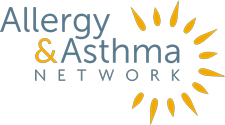In the last decade, biologic medications have emerged as a recommended treatment for many diseases. These include severe asthma, atopic dermatitis, psoriasis, chronic rhinosinusitis with nasal polyps and certain autoimmune diseases. The specialized medicines can help reduce symptoms and improve quality of life for many patients.
As usage of biologics has increased, Allergy & Asthma Network and the American Partnership for Eosinophilic Disorders (APFED), both national 501(c)(3) patient advocacy organizations, saw a need for greater awareness and education. They partnered to develop and launch a new Biologics Toolkit website to help people learn about biologics and the conditions they treat.
The toolkit is available at BiologicMeds.org.
“The Biologics Toolkit was developed with patients in mind,” says Tonya Winders, President and CEO of Allergy & Asthma Network. “These medications have made a world of difference for many patients, but they are not for everyone. Begin a conversation with your doctor if your treatment plan is not working. Find out if there’s a biologic that is right for you.”
“This educational resource will help people better understand how biologic medicines work and how they are administered,” says Mary Jo Strobel, Executive Director of APFED. “Biologics are currently available for severe and/or eosinophilic asthma, eosinophilic esophagitis, eosinophilic granulomatosis with polyangiitis, and other conditions. These specialized medicines gradually reduce symptoms over time. They have been shown to improve quality of life for many patients.”
What are biologics?
Biologic medications are designed to treat the source of symptoms rather than the symptoms themselves. They are sometimes referred to as precision or personalized medicine because they target specific cells and pathways. In severe asthma, for example, biologics block the release of certain chemicals that can cause inflammation and breathing problems.
Biologics are typically prescribed when patients continue to have severe symptoms despite the use of other treatments. They are available for a host of age groups, depending on the disease. Biologics are typically given as an injection or infusion every 2-4 weeks and in some cases can be administered at home.

Tools In the Toolkit
The Biologics Toolkit website offers educational support for patients and healthcare professionals alike. We invite you to visit BiologicMeds.org, where you will:
- learn when to talk with your doctor about considering biologics;
- read a comprehensive overview of all the available biologics;
- learn the terms to know when discussing biologics;
- find out if insurance covers biologics and if there may be out-of-pocket costs;
- learn how to administer biologic medications at home;
- find out what side effects to watch for and monitor;
- debunk common myths involving biologics;
- get a list of questions you should ask your doctor;
- learn the difference between biologics and biosimilars;
- access additional resources.
Use the website to better understand how biologics can help you. Share the website with your family, friends and colleagues to spread the message far and wide that biologics can help transform your health.
The BiologicMeds.org website was created with support from Amgen, AstraZeneca, Regeneron and Sanofi. We also thank pulmonologist Vickram Tejwani, MD, who volunteered time to review the content on the website.


 810304 Eaton Place, Suite 100
810304 Eaton Place, Suite 100